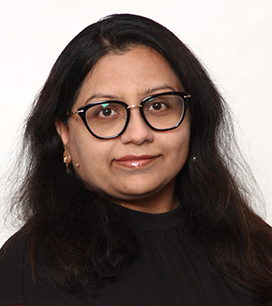Understanding the barriers immigrants face in accessing healthcare in Canada

By Todd Devlin
When she moved to Canada in 2017, Saleema Allana had the unique opportunity to learn about and assess the Canadian healthcare system with fresh eyes – and with the experience of having worked in a much different system in her home country of Pakistan.
Now a researcher and assistant professor in Western’s Arthur Labatt Family School of Nursing, Allana spent two years earlier in her career as a critical care nurse in the coronary unit at Aga Khan University Hospital in Karachi. She worked one-on-one with cardiovascular patients – in most cases, individuals in older and more vulnerable demographics.

Saleema Allana, Arthur Labatt Family School of Nursing
“Definitely, the Canadian healthcare system is better than many others in the world, and especially where I came from,” said Allana. “But one thing that really stood out for me was that the Canadian healthcare system – and the services offered here – are really geared towards the general population.
“There are many areas where there is a need for healthcare services to be unique and specific to immigrant populations,” she added. “People come from different backgrounds, and they have very different values and beliefs in relation to health. The current services offered are mostly generic in approach, and I think there’s a big gap that needs to be filled.”
Numerous studies have identified that immigrants to Canada, particularly racialized individuals, are less likely to self-report being in good health compared to individuals who were born in the country (particularly white Canadians). Other studies, meanwhile, have shown that immigrants face inequities within the Canadian healthcare system.
Why is this the case? A primary reason given is that immigrants face unique barriers to accessing and receiving quality healthcare. These include difficulties in navigating the healthcare system, language barriers, cultural differences, economic barriers, and issues related to geography and transportation.
But it goes deeper. And Allana is exploring the issue through the lens of intersectionality. That is, learning and understanding how an immigrant’s various social identities – race/ethnicity, religion, gender, sexual orientation, social class, etc. – intersect to either produce a social advantage or a social disadvantage – in this case, their experiences and outcomes within the healthcare system.
“Why this is so important to understand, in relation to health,” Allana said, “is that when these various social identities intersect, some populations are more at risk of being disadvantaged within the healthcare system – and more at risk of health inequities.
"People come from different backgrounds, and they have very different values and beliefs in relation to health. The current services offered are mostly generic in approach, and I think there’s a big gap that needs to be filled."
“So, it is important to identify the populations that are more at risk, and then, accordingly, plan interventions for those populations.”
Allana’s work focuses on patients who have experienced heart failure – specifically, immigrants with the condition. It’s a demographic she’s been working with and researching for over a decade. And it’s one, she says, that hasn’t received enough attention.
“This population is really vulnerable. It’s mostly older adults who are affected, so their frailty and their cognitive decline potentially puts them at risk,” she said. “And the heart failure disease process itself is quite devastating for most patients, which is another source of vulnerability.
“And then, if these patients are coming from socially vulnerable backgrounds, that’s an added factor which adds to their vulnerability,” she added. “That’s why I felt this population was in need of exploring – especially from an intersectionality perspective – how this affects their heart failure care.”
During her PhD, which she completed at the University of Alberta, Allana explored telehealth (and virtual) programs for heart failure patients. She completed several literature syntheses, and found that the research around immigrant populations and cardiovascular care is sparse – even in countries with very large immigrant populations.
“There is much less participation from immigrant groups in this kind of research. Often, they’re not even approached (for studies),” Allana said. “As researchers, if we do not bring these issues to the surface and do not explore them, how can we reach a solution? That’s a major issue.”
What the general research does show, Allana says, is that there are wide gaps in immigrants’ access to the Canadian healthcare system and, subsequently, health inequities. Some of it is a lack of knowledge on the part of immigrants. Some, Allana says, is that healthcare professionals aren’t aware of the unique needs of specific immigrant populations.
“Often, when (immigrants) come into contact with healthcare professionals, they don’t feel that their needs are being met,” she said. “And we’re not training our nurses and our doctors to be able to meet the unique needs of immigrant populations.”
Importantly, Canadian immigrants are not a homogenous group, either. A South Asian patient population, Allana says, is very different, of course, from an African immigrant population, from a Chinese immigrant population …
“They all have unique needs, unique cultural values and beliefs that affect their health,” she said. “So, we need data around each of these groups. And then, to close the (healthcare) gaps, we need research-based, evidence-based solutions.”
Using the philosophical lens of intersectionality, Allana is seeking to find out more about the health inequities immigrants face – and, ultimately, uncover ways to close the healthcare gaps and improve the overall health and wellbeing of Canadian immigrants.

